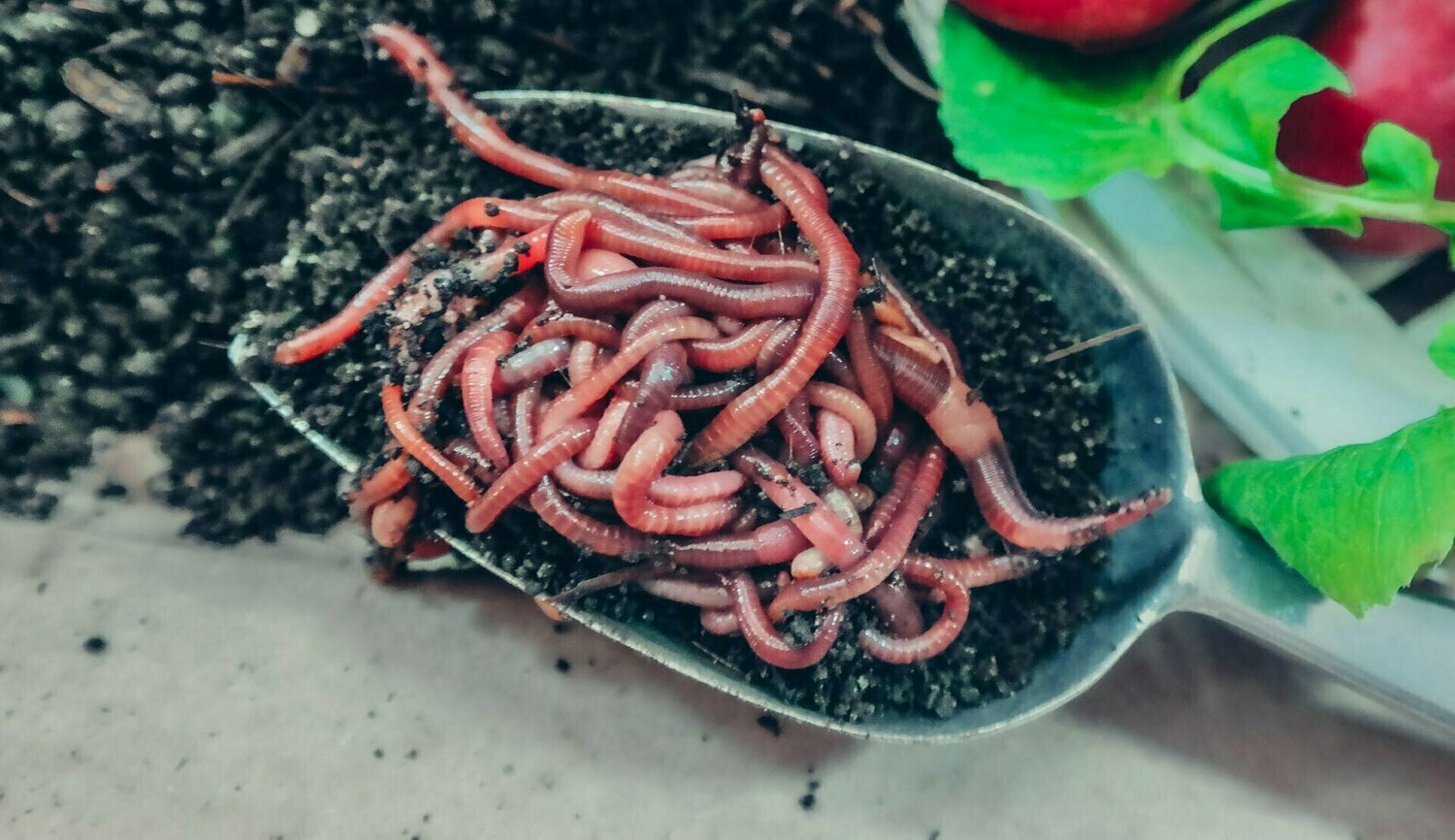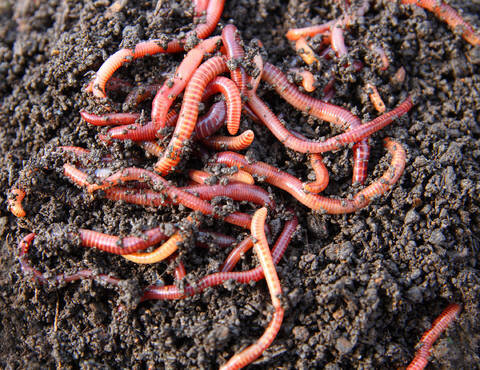Compost-ready red wigglers: Top sources for purchase
Compost-ready red wigglers: Top sources for purchase
Blog Article
The Duty of Red Wigglers in Lasting Gardening
The integration of red wigglers right into lasting gardening techniques uses a compelling approach to boosting soil health and wellness and reducing organic waste. These microorganisms not only convert kitchen area scraps right into nutrient-dense compost through vermicomposting yet likewise aerate the dirt, promoting optimum problems for plant growth. As they damage down complex organic materials, they proactively promote a thriving microbial ecological community necessary for sustainable farming. Nevertheless, the effects of utilizing red wigglers expand beyond plain composting; their role fit a more lasting future warrants a deeper exploration of their advantages and useful applications.
Understanding Red Wigglers
Red wigglers, clinically recognized as Eisenia fetida, are a species of earthworm renowned for their role in lasting horticulture and composting techniques - red wigglers. These worms thrive in breaking down natural issue, making them specifically reliable in converting kitchen area scraps and yard waste into nutrient-rich compost. Unlike conventional earthworms, red wigglers have a greater resistance for differing dampness degrees and can prosper in settings with abundant organic material
(red wiggler composting worms)Characteristically, red wigglers are smaller sized than their earthworm counterparts, generally determining between 3 to 4 inches in size. They possess a reddish-brown pigmentation and have a segmented body framework that helps in their burrowing and feeding activities. These microorganisms are hermaphroditic, meaning each specific possesses both male and women reproductive organs, which enables effective populace growth under optimum conditions.
The environment preferences of red wigglers include wet, dark atmospheres abundant in organic web content, such as compost containers or worm farms. Their environmental duty prolongs past composting; they are integral in freshening the dirt and helping with nutrition biking, which eventually adds to healthier garden ecological communities. red wigglers. Understanding the biology and habits of red wigglers is important for those looking for to implement efficient vermicomposting in lasting horticulture
Benefits of Vermicomposting
Vermicomposting offers many benefits that enhance sustainable horticulture techniques and add to environmental health and wellness. Among the primary benefits is the improvement of natural waste right into nutrient-rich compost, which enhances dirt framework and fertility. The spreadings produced by red wigglers are packed with helpful microbes and important nutrients, making them an exceptional all-natural fertilizer.
In addition, vermicomposting significantly decreases garbage dump waste. By drawing away cooking area scraps and backyard waste from landfills, this practice not only minimizes methane discharges-- a powerful greenhouse gas-- yet additionally advertises a round economy, where waste is repurposed as a resource.
Another advantage is the enhancement of soil oygenation and water drainage (red wigglers). The burrowing task of red wigglers develops networks in the dirt, enabling air and water to permeate even more quickly, hence fostering a healthier origin system for plants
Moreover, vermicomposting can be done on a small range, making it obtainable for city garden enthusiasts and those with restricted room. This approach urges environmental stewardship and recognition, as people end up being much more engaged with their waste management techniques. Inevitably, vermicomposting represents a sustainable, reliable, and eco-friendly strategy to horticulture that benefits both plants and the planet.
Just How to Begin Vermicomposting
Starting your own vermicomposting system can be a rewarding undertaking that improves your sustainable horticulture techniques. To begin, pick an ideal container, such as a plastic bin or wooden box, with excellent drain and ventilation. The dimension will rely on the quantity of kitchen scraps you create; a bin of 10-14 gallons generally suffices for a family.
Following, prepare the bed linen material. Shredded paper, cardboard, and coconut coir are outstanding alternatives, supplying a comfortable environment for the red wigglers. Aim for a bed linens depth of about 4-6 inches, which should be damp yet not soaked.
As soon as the bedding is developed, introduce your worms. Red wigglers (Eisenia fetida) are one of the most suitable for composting. Beginning with approximately one pound of worms for each 2-3 pounds of cooking area scraps weekly.
Begin including cooking area waste, preventing meat, milk, and oily foods, as these can attract parasites and produce smells. Frequently check the bin's dampness degrees and temperature, guaranteeing it continues to be within the optimal array for worm activity. With these preliminary actions, you'll be well on your way to producing nutrient-rich garden compost for your garden.
Preserving a Healthy And Balanced Worm Container
A thriving worm bin needs regular care and focus to maintain an optimal environment for the red wigglers. Secret aspects to monitor include moisture levels, temperature level, and food supply. Keeping a wetness degree akin to a wrung-out sponge is important; way too much water can bring about anaerobic conditions, while too little can dehydrate the worms.
Temperature is likewise important, as red wigglers grow in a series of 55 to 77 degrees Fahrenheit. Extreme temperatures can stress the worms, potentially resulting in mortality. For that reason, putting the bin in a climate-controlled area or utilizing shielding products can aid control temperature level changes.

Finally, aeration is essential. On a regular basis turning the bed linens and utilizing a fork or shovel can prevent compaction and advertise air flow, ensuring a healthy and balanced, flourishing setting for the red wigglers. By adhering to these techniques, gardeners can keep an efficient worm container that supports lasting gardening initiatives.
Impact on Dirt Health
Enhancing dirt health via making use of red wigglers is an essential aspect of sustainable horticulture. These worms, understood medically as Eisenia fetida, play an important duty in improving dirt framework and fertility. By consuming raw material, red wigglers break down intricate materials into less complex compounds, a process called vermicomposting. The end product, worm spreadings, is abundant in important nutrients, consisting of nitrogen, phosphorus, and potassium, which are essential for plant growth.

(Hickory)Studies have actually revealed that dirts enhanced with worm spreadings exhibit increased microbial task and boosted fertility, leading to greater like this plant yields. By including red wigglers right into horticulture practices, garden enthusiasts not just enrich their dirt but additionally add to an extra sustainable farming system, stressing the interconnectedness of dirt wellness and environmental stewardship.

Verdict
In verdict, red wigglers dramatically contribute to sustainable gardening through their reliable vermicomposting techniques. By promoting waste decrease and cultivating a circular economy, red wigglers emerge as important components in environmentally friendly horticulture campaigns, underscoring their important function in environmental sustainability.
Report this page